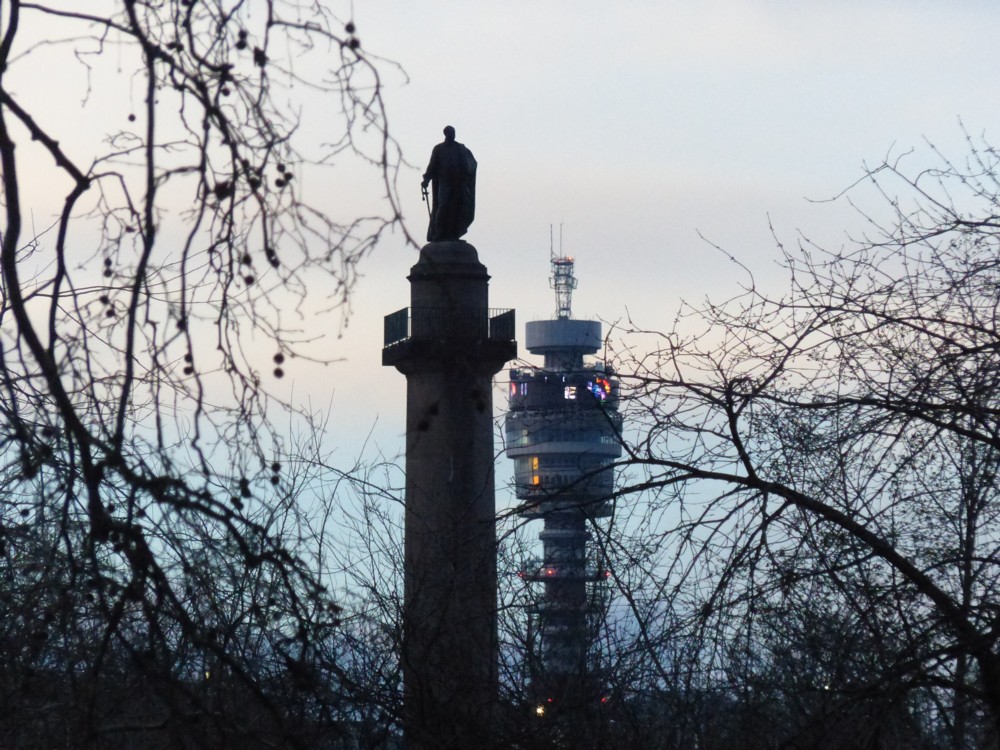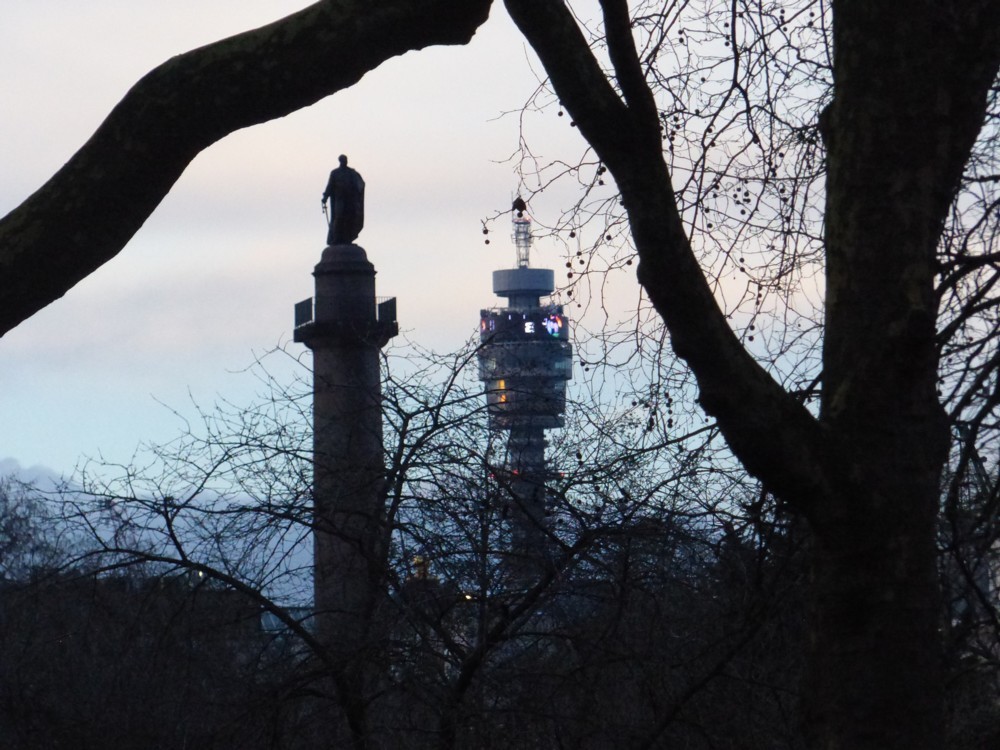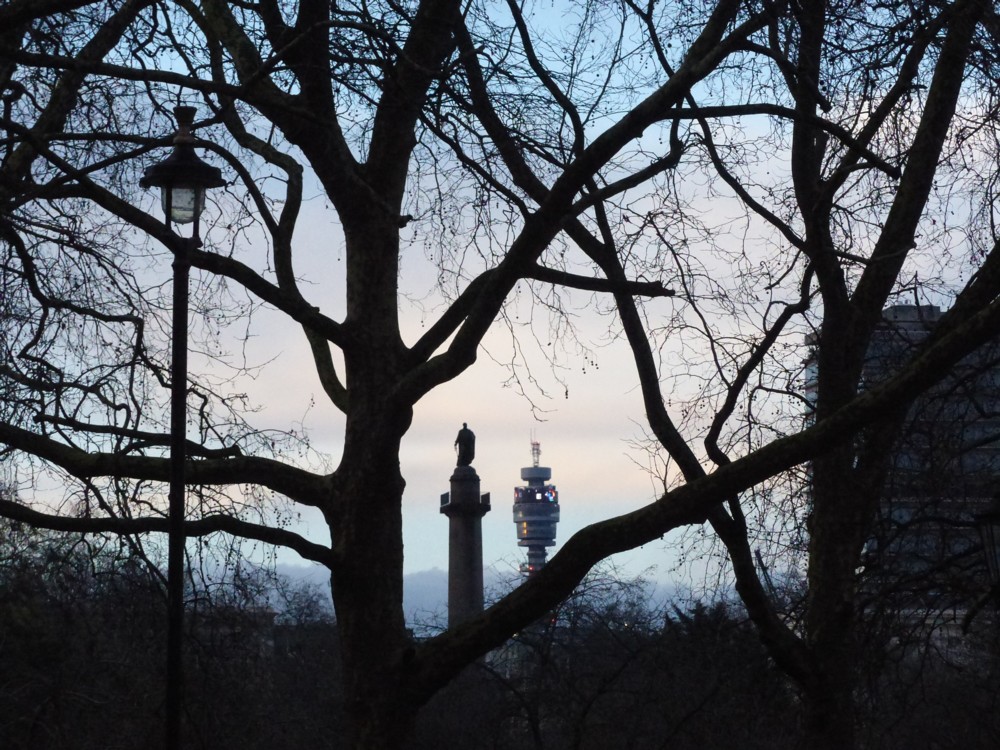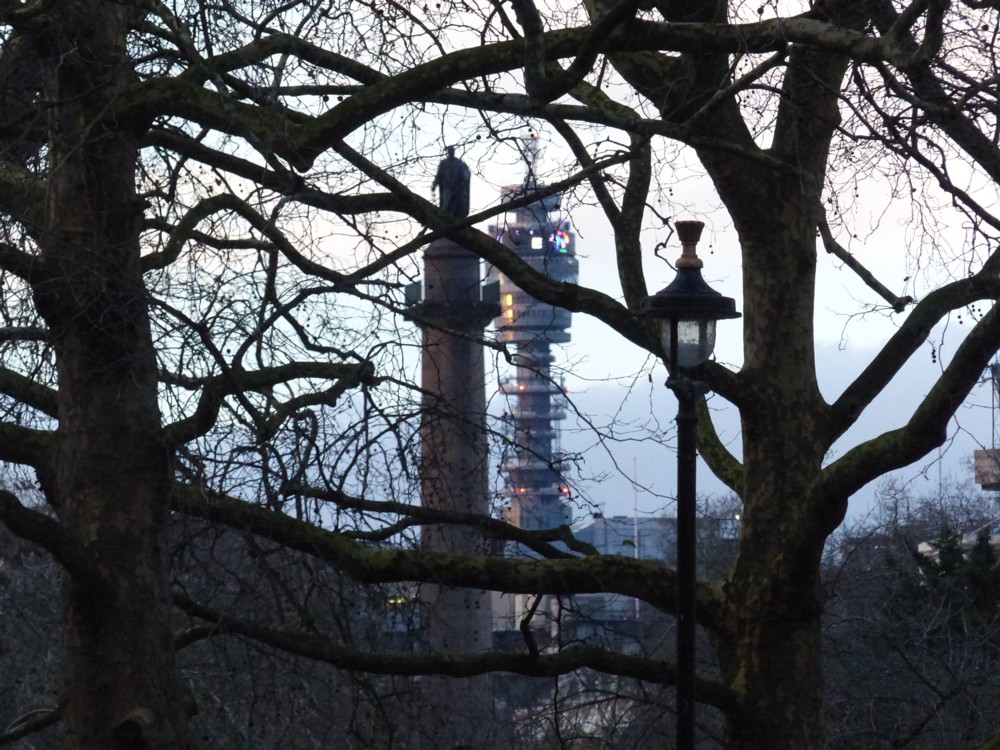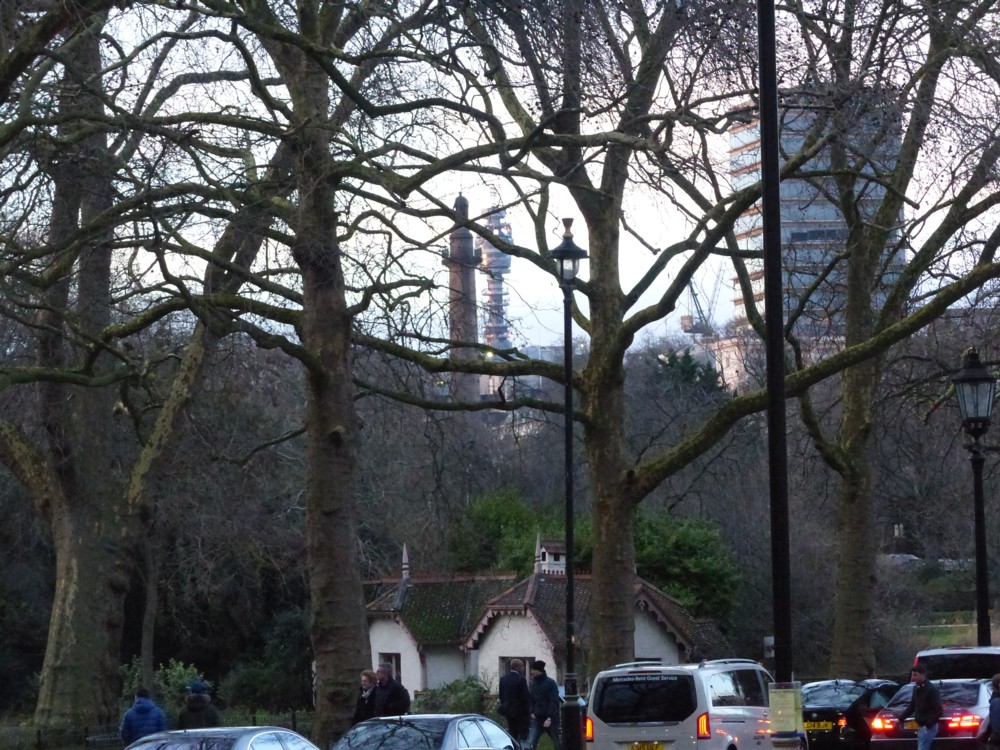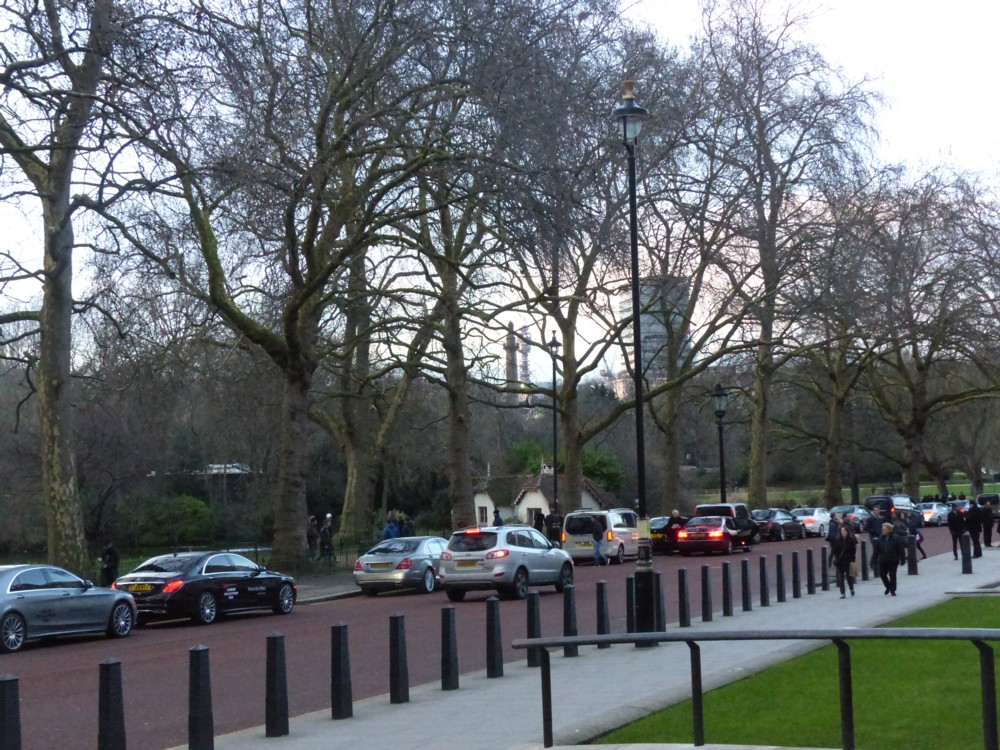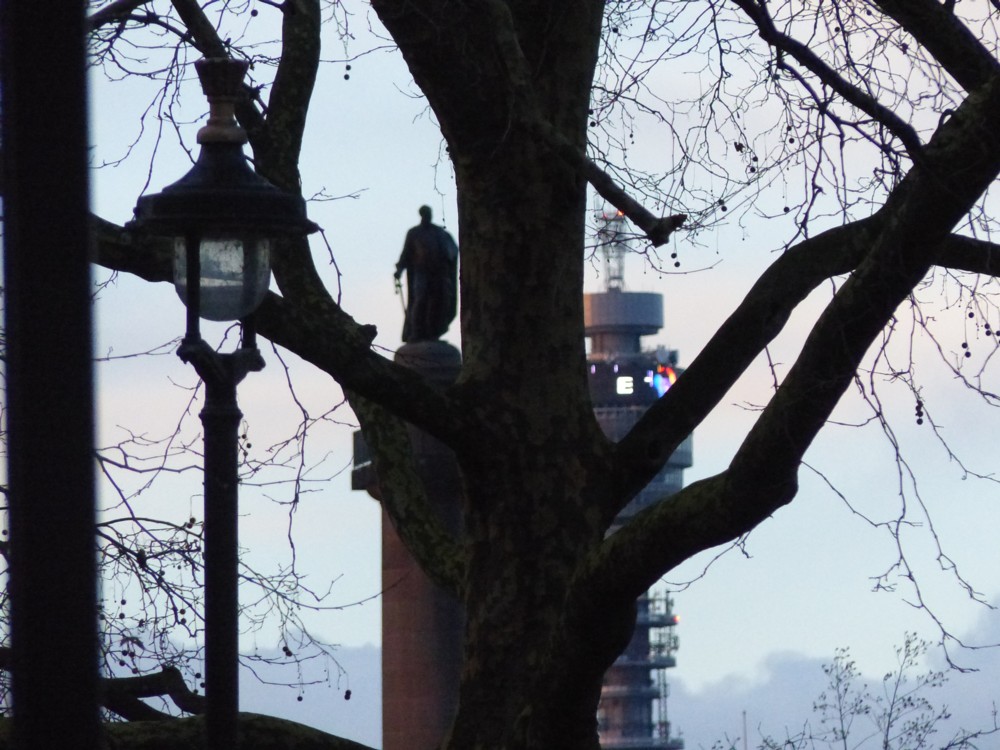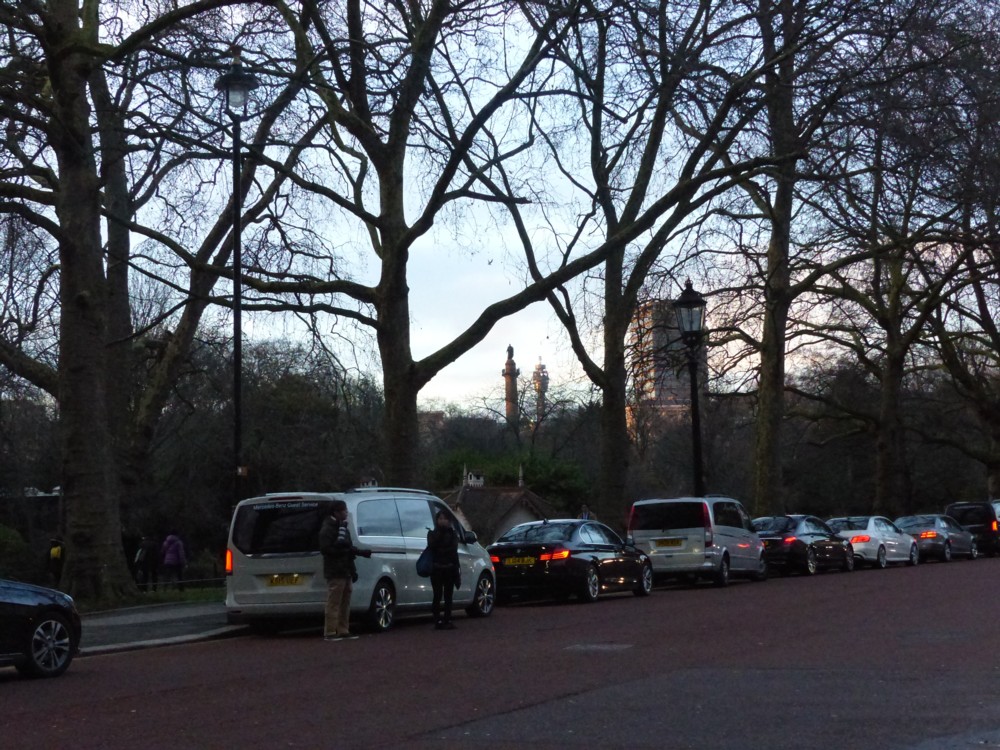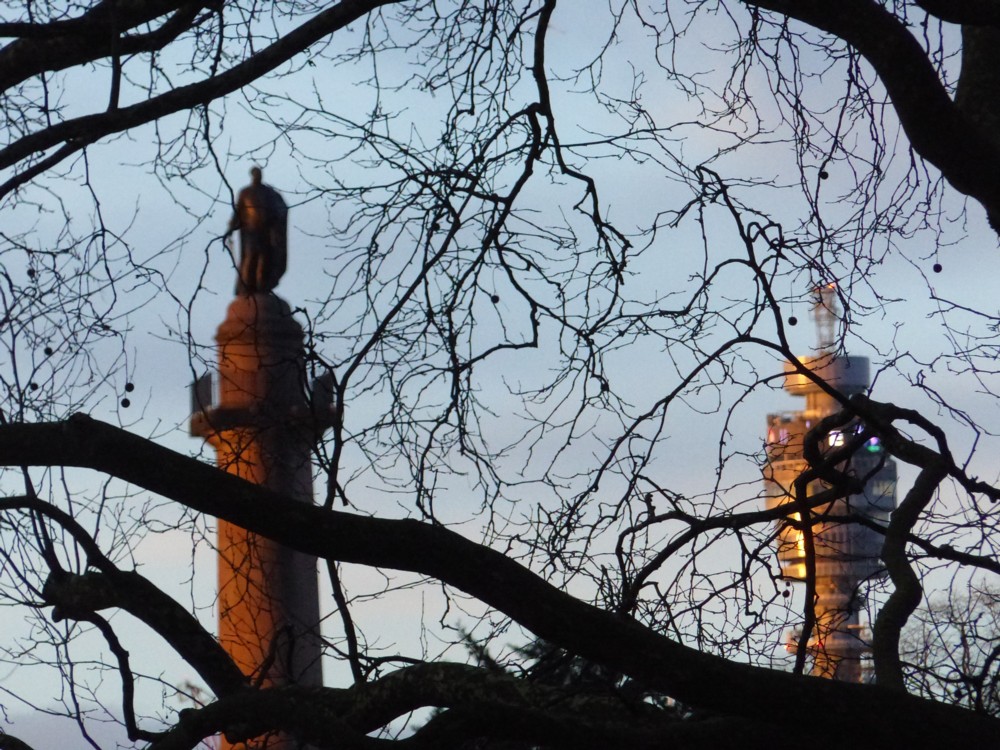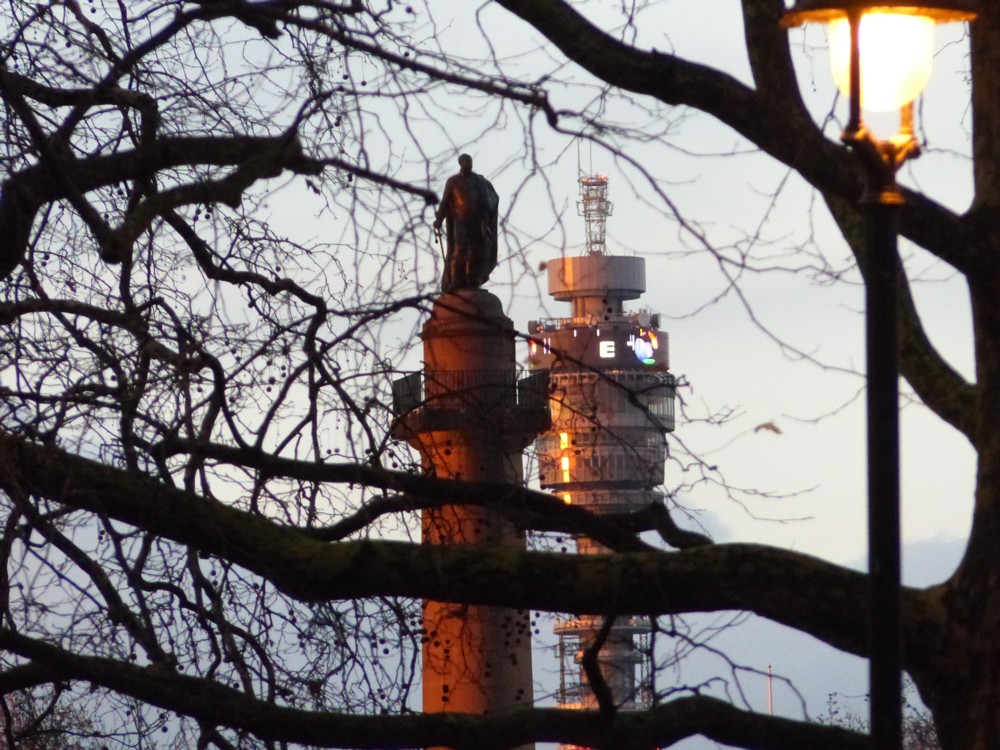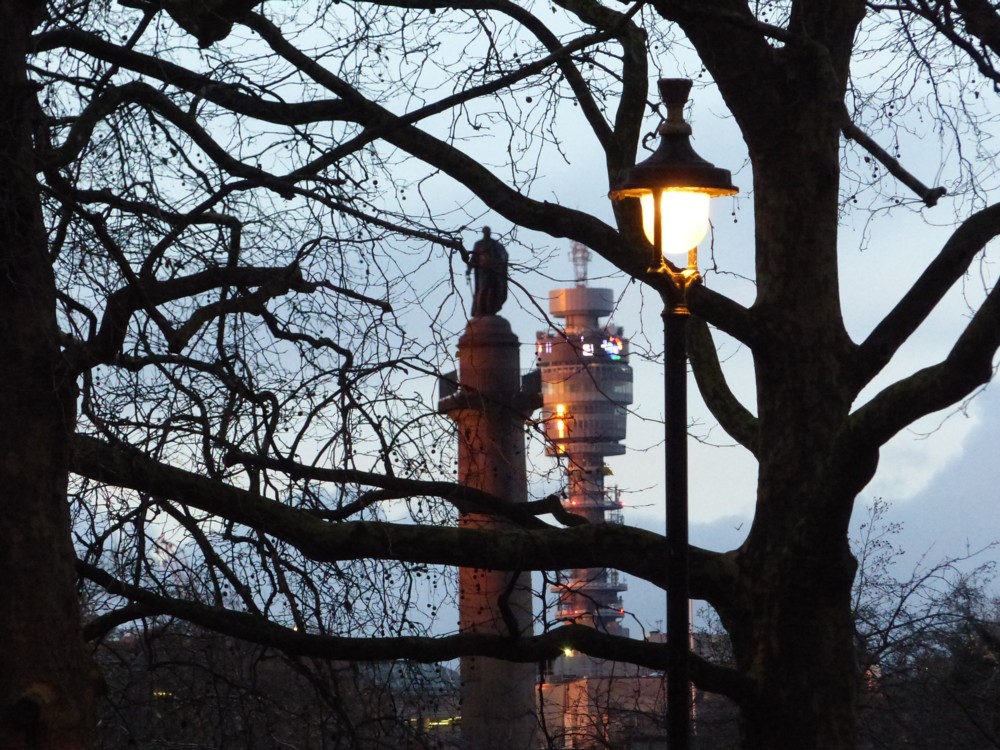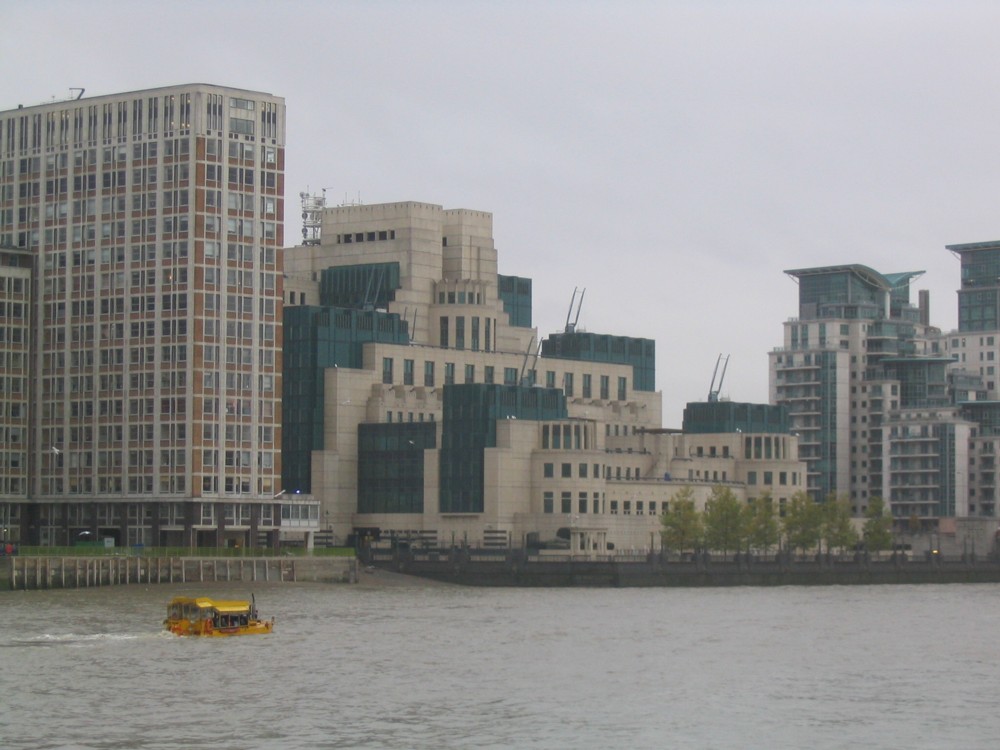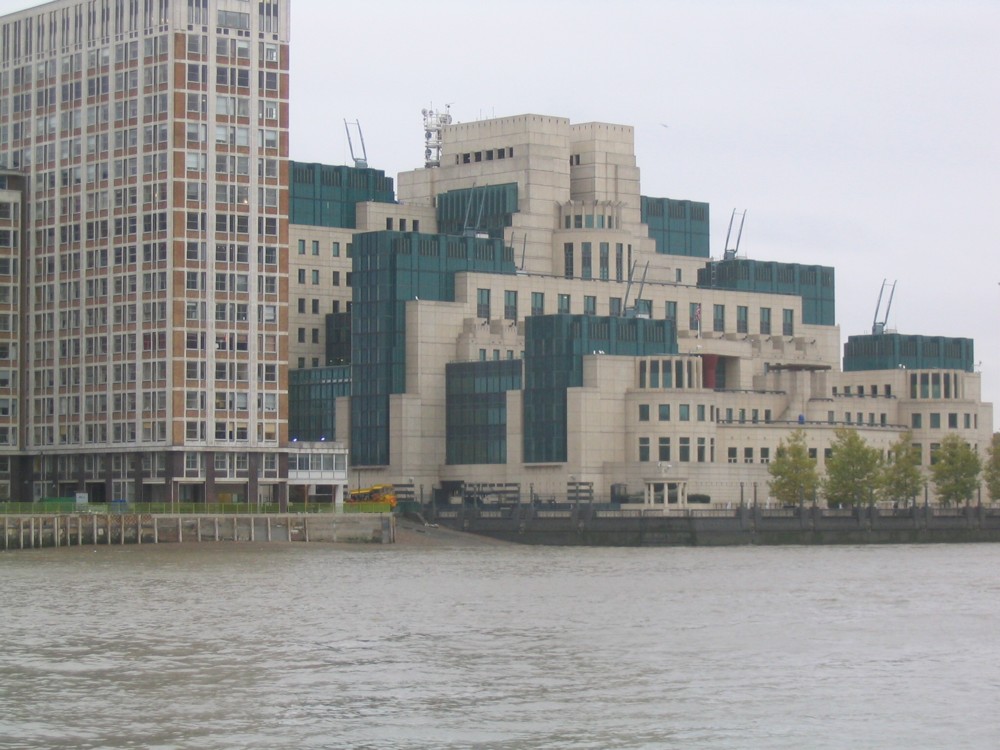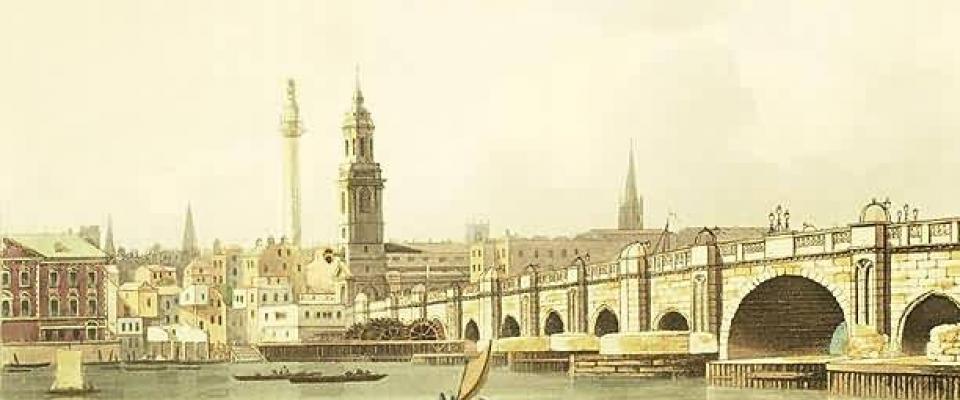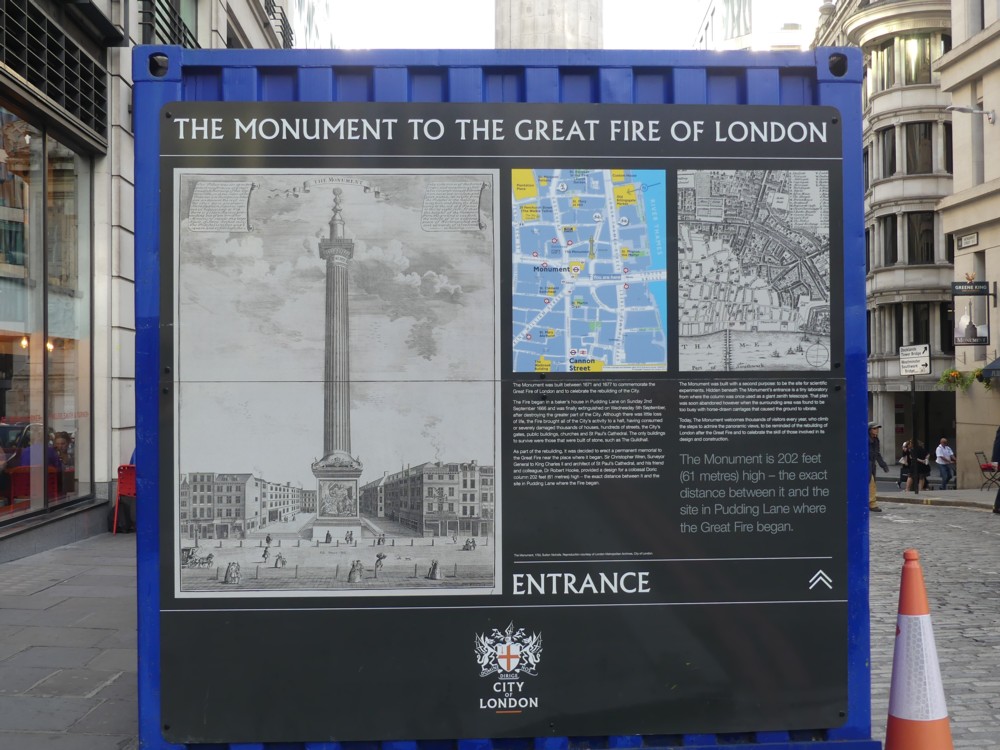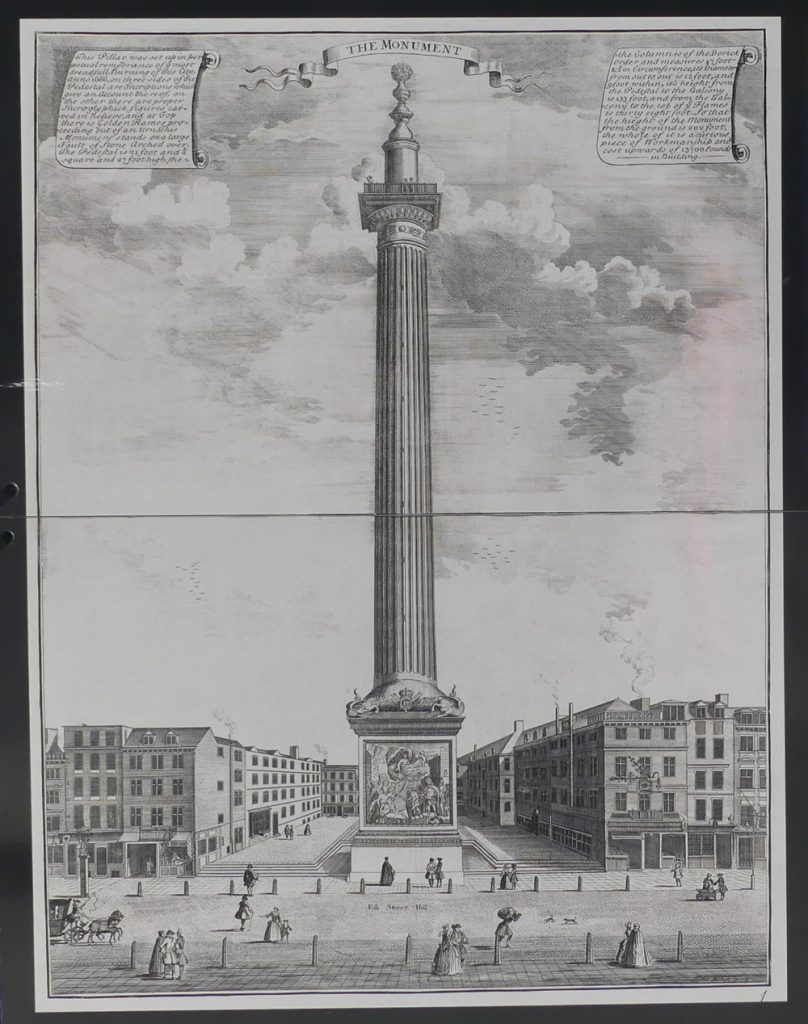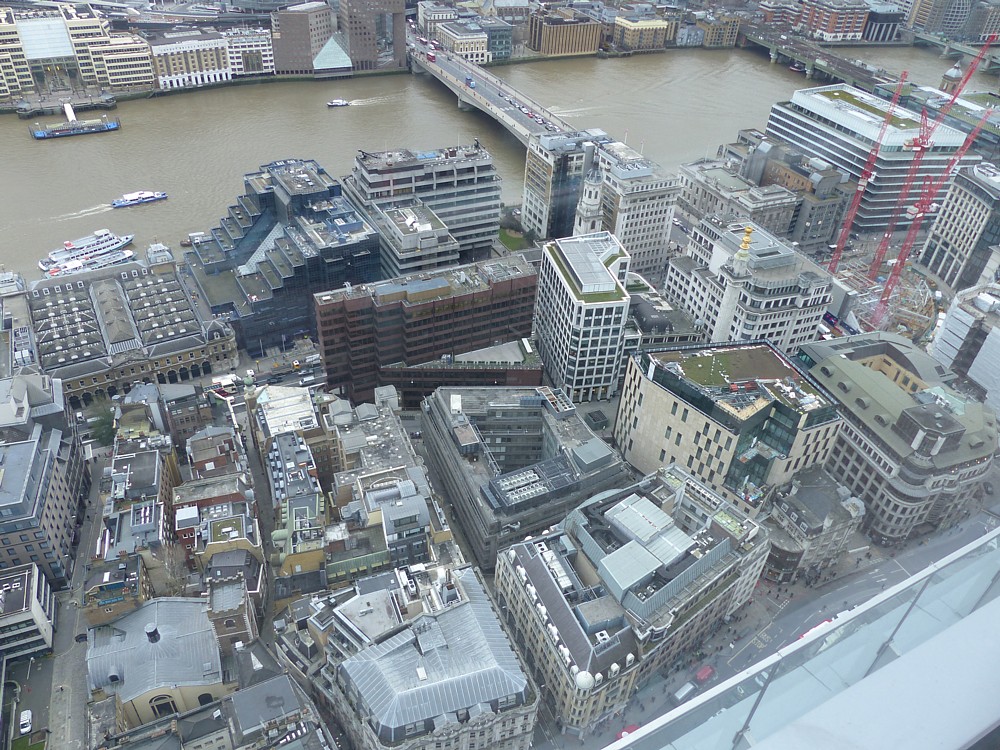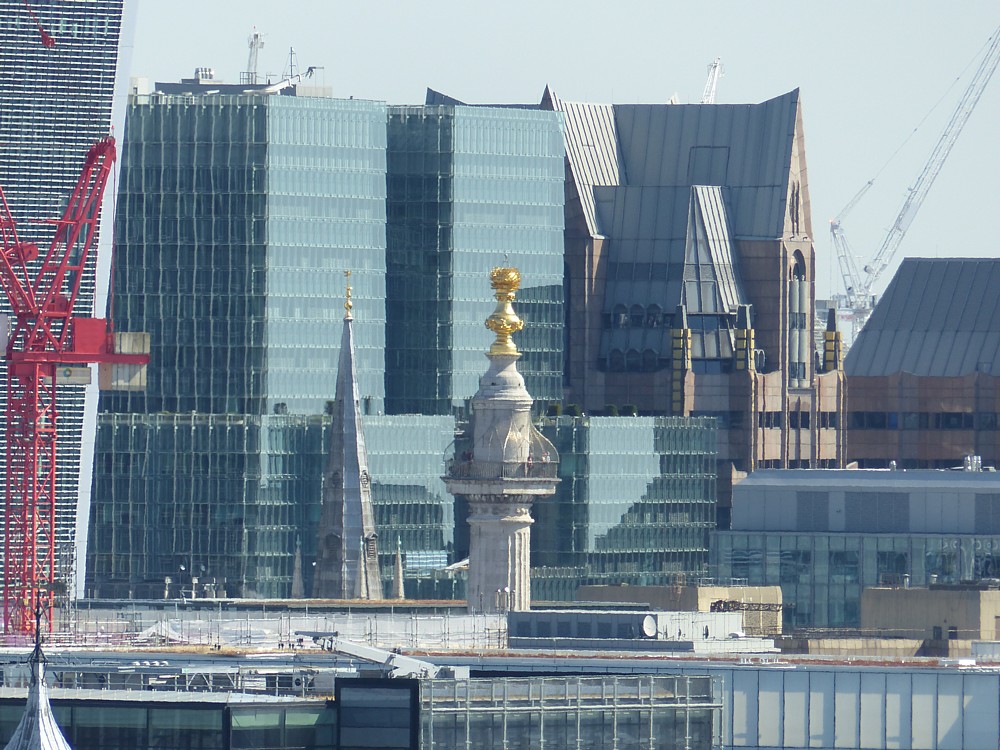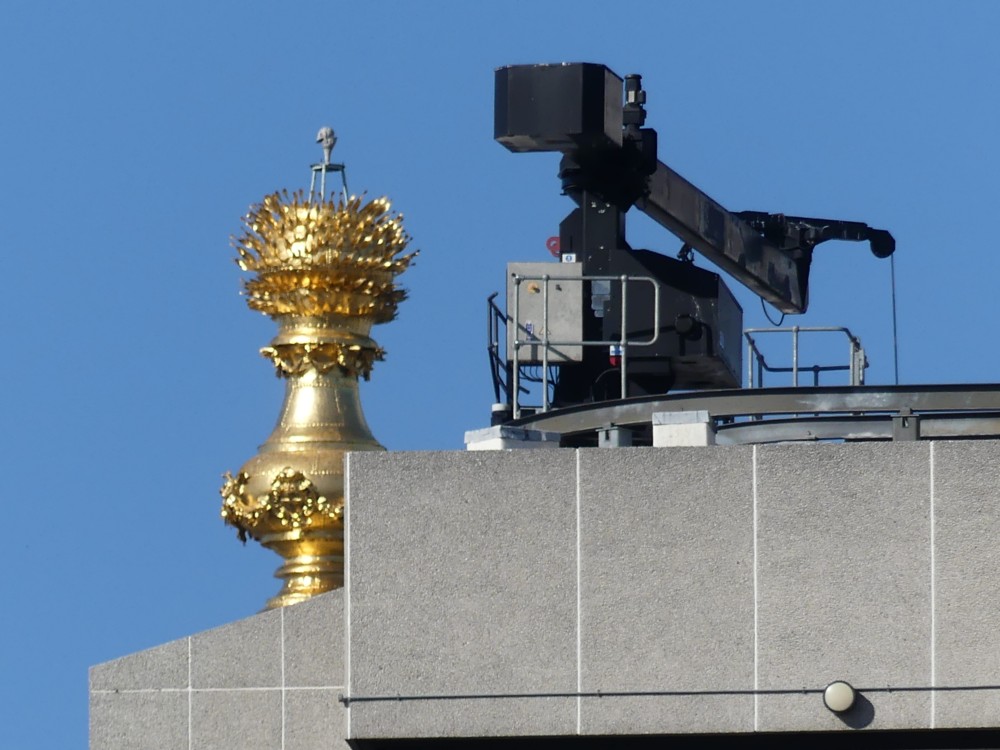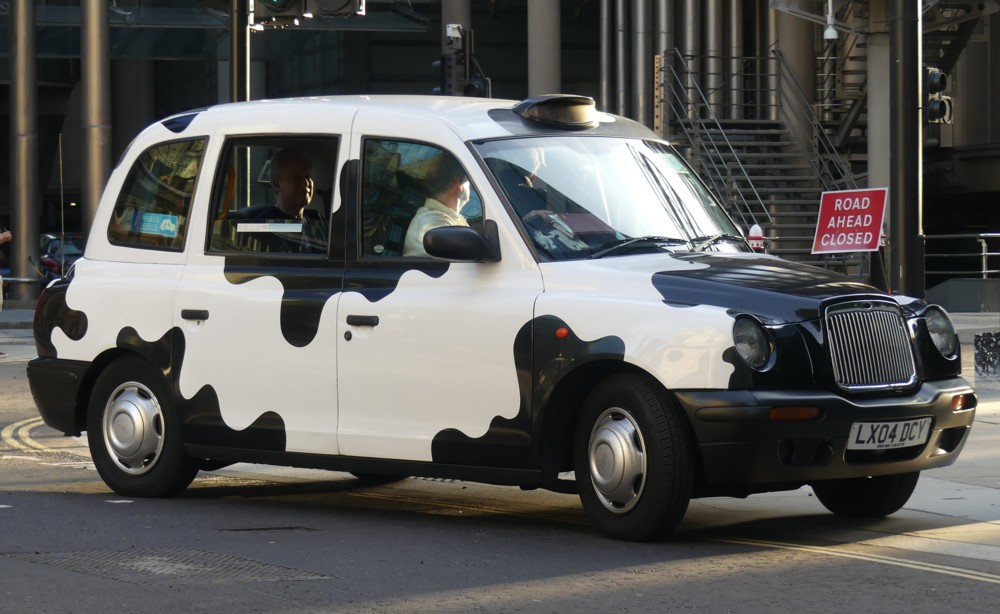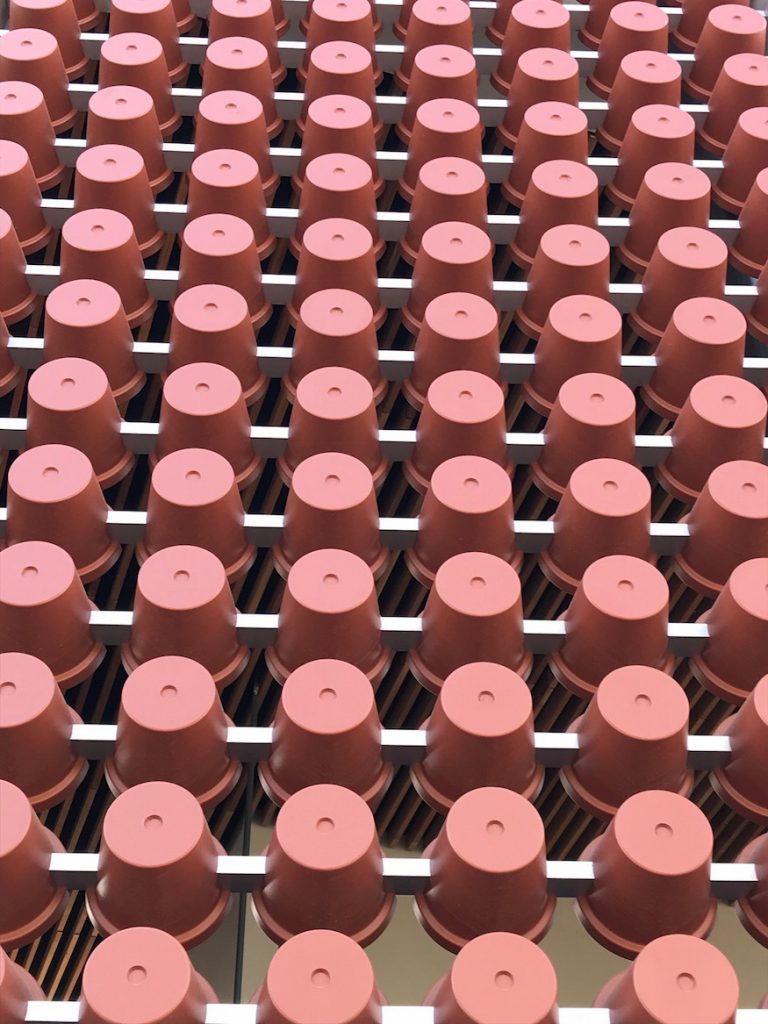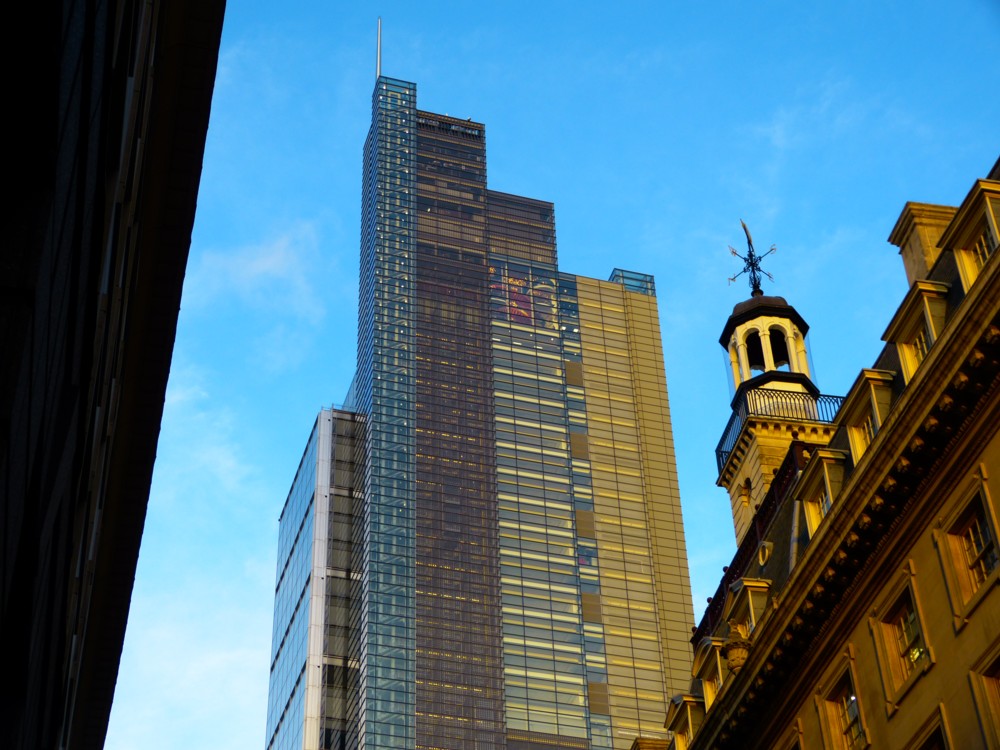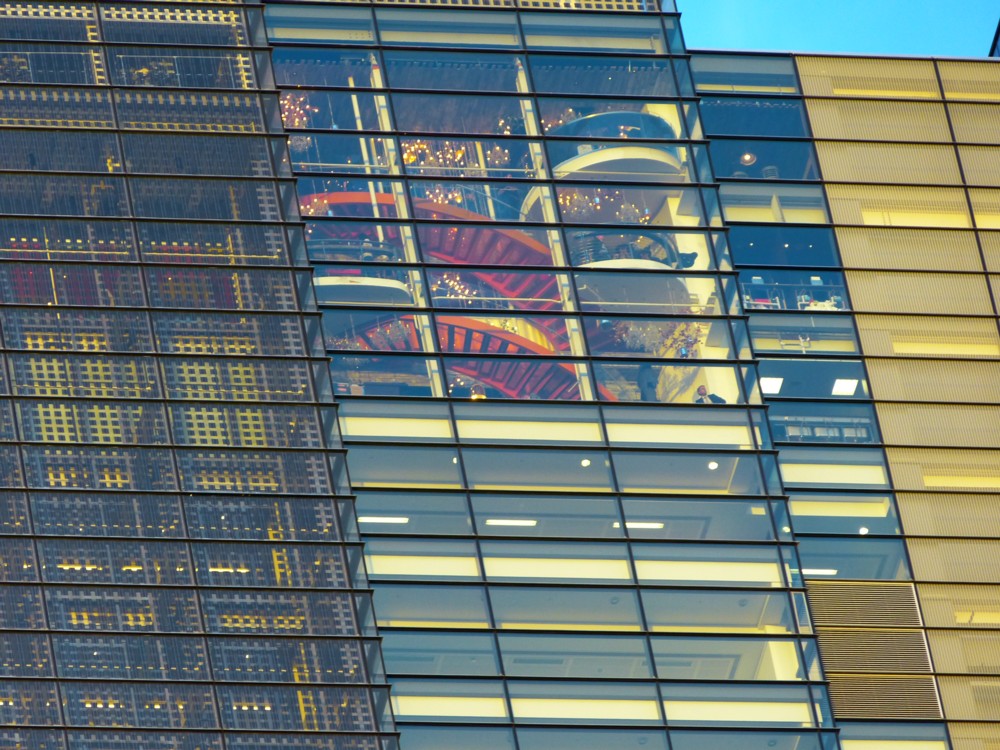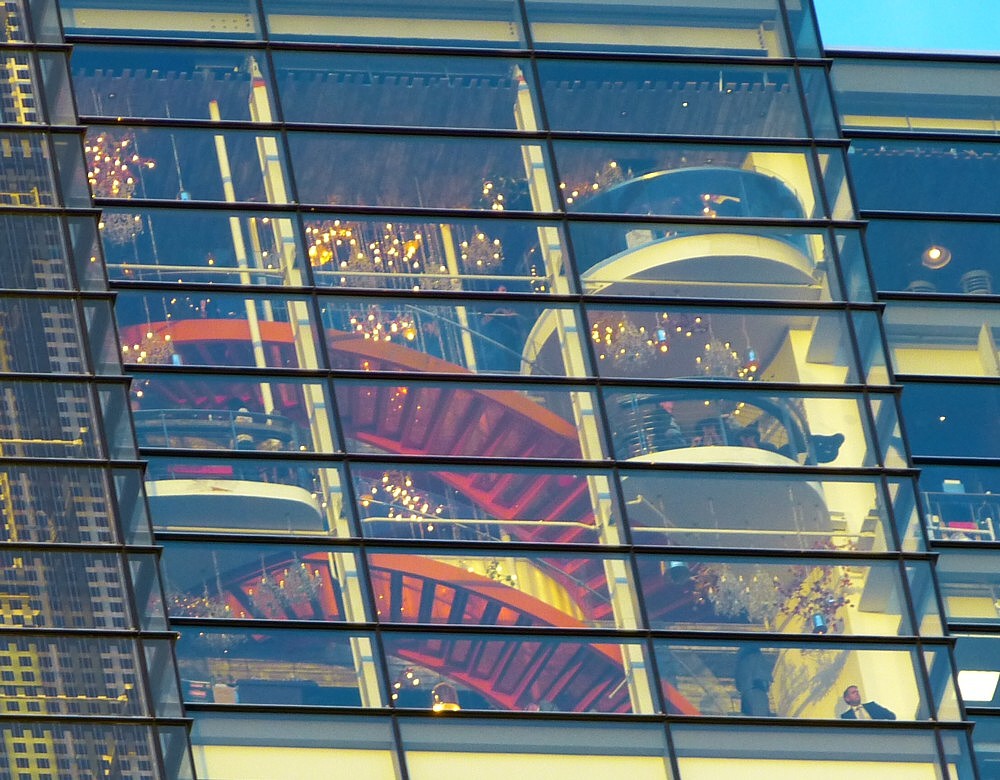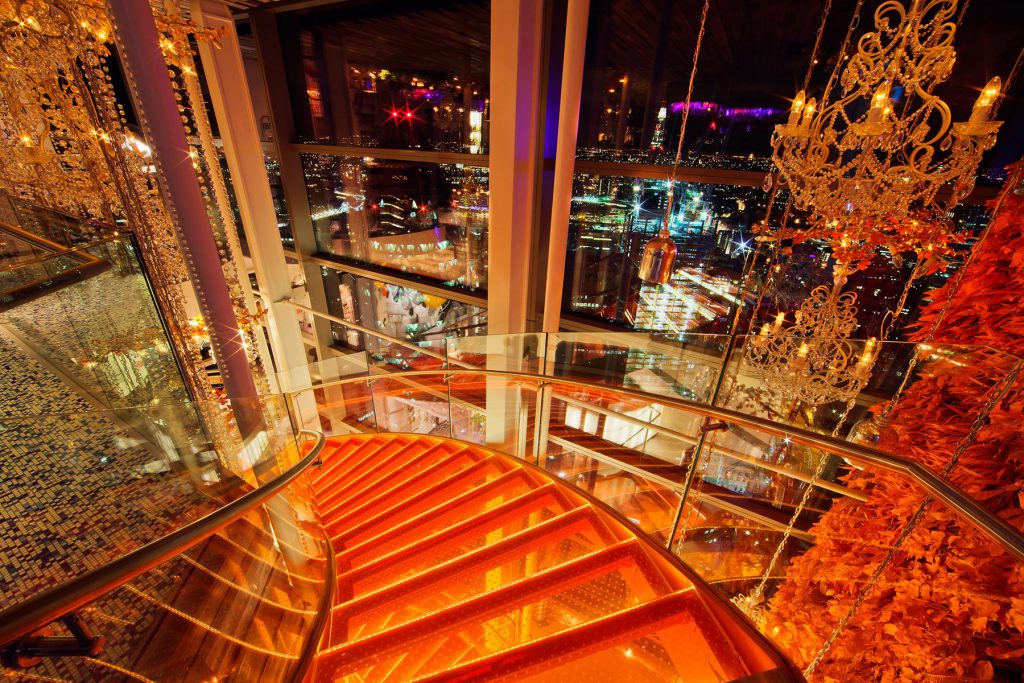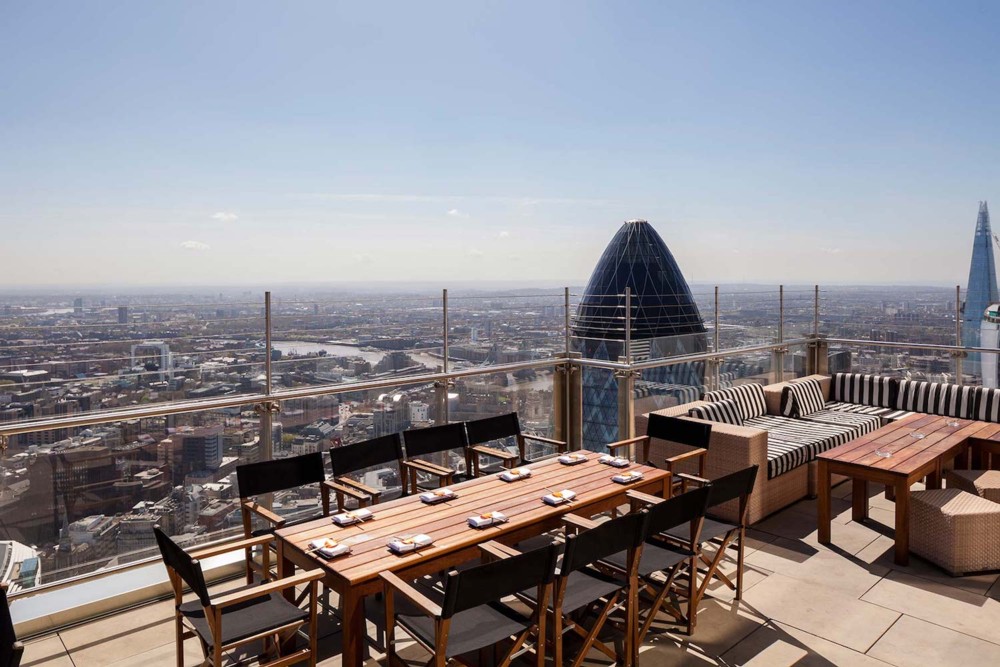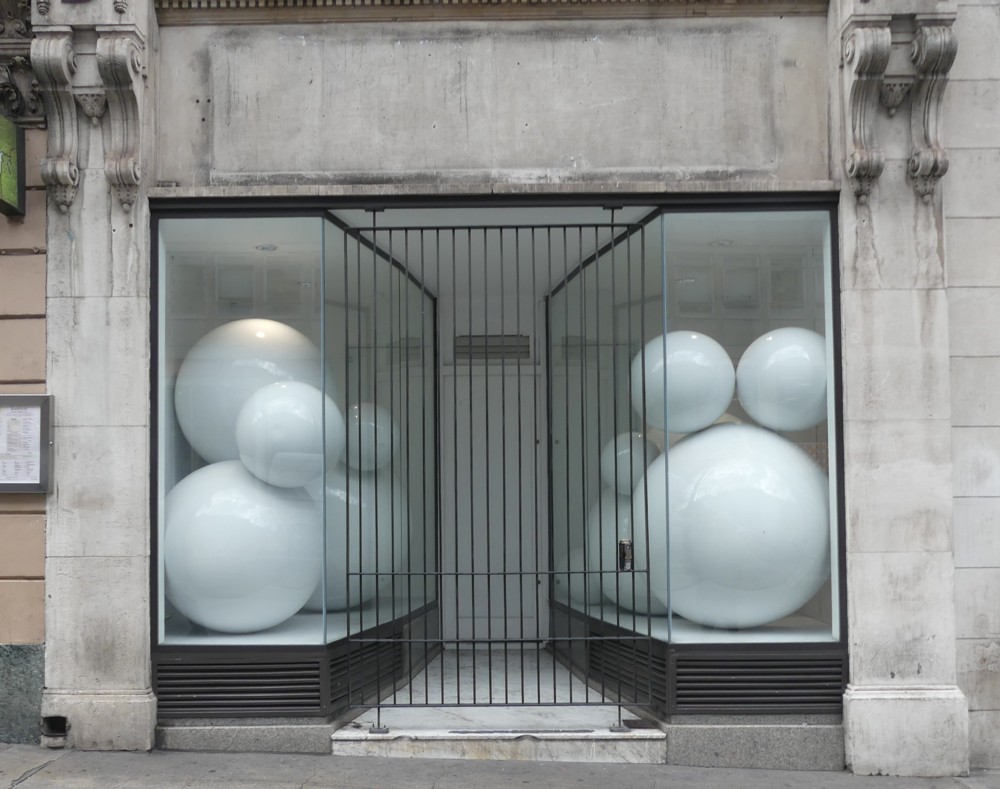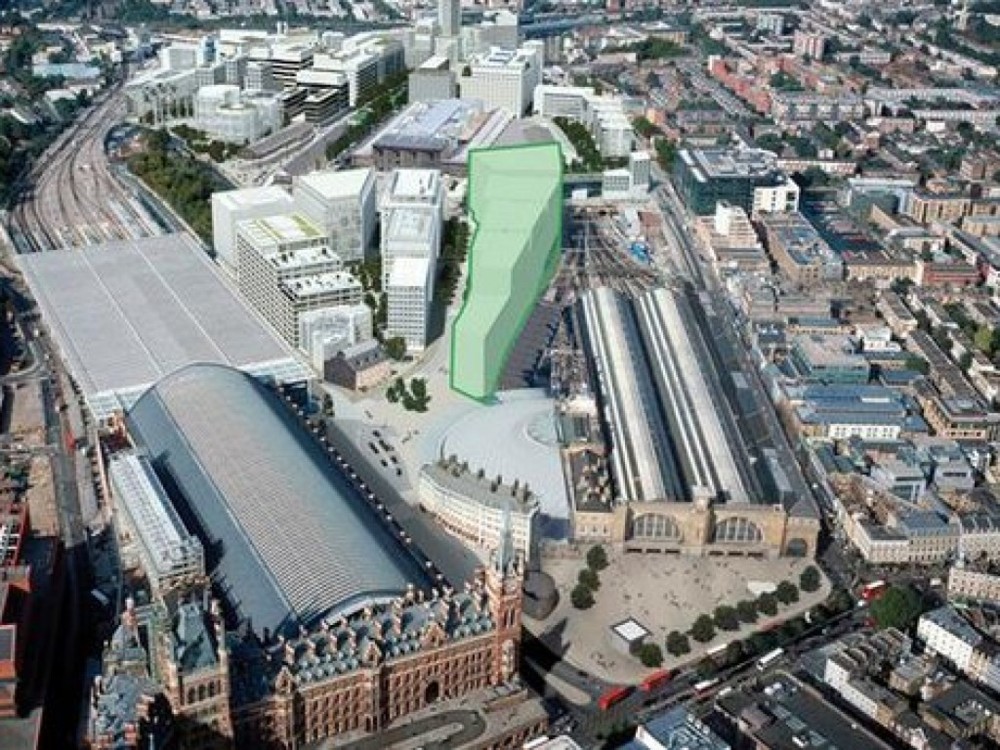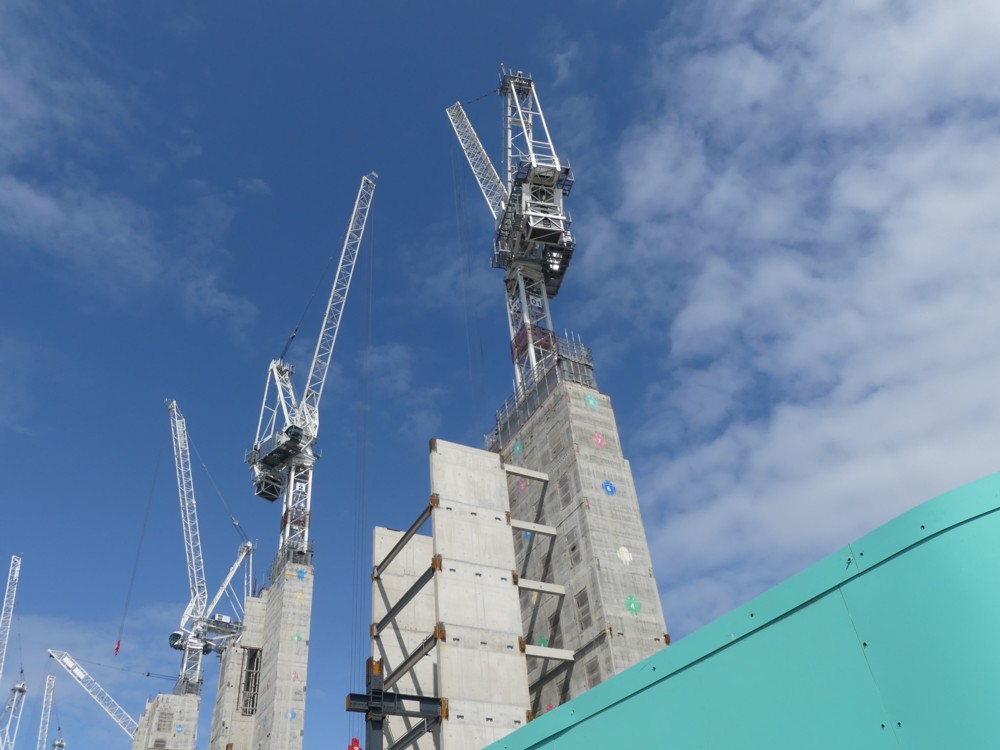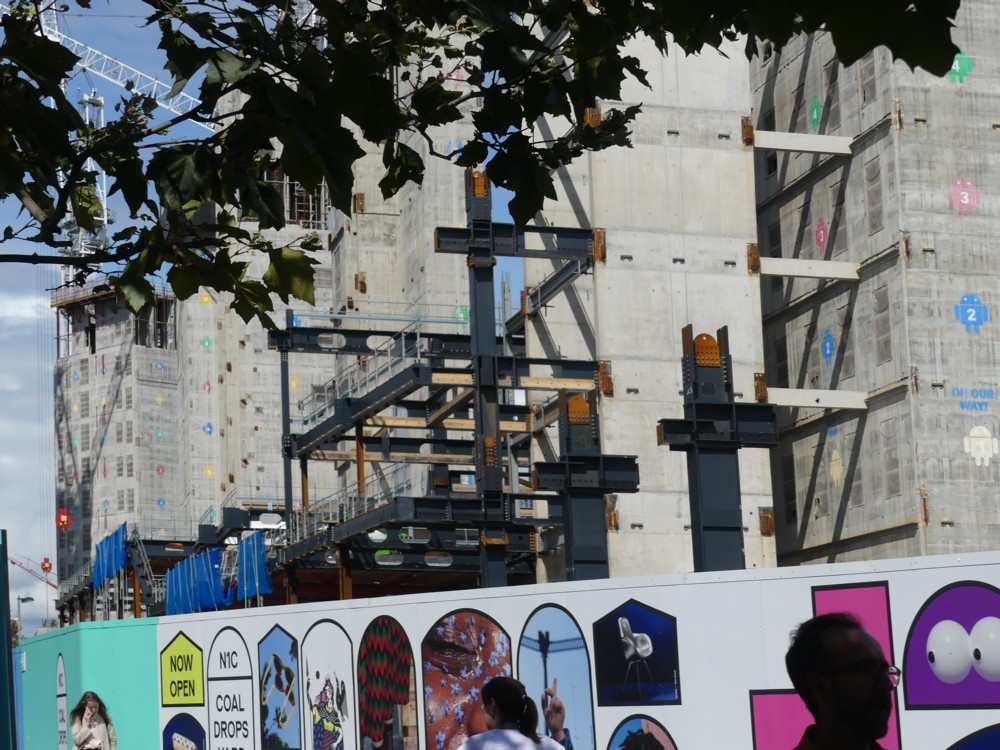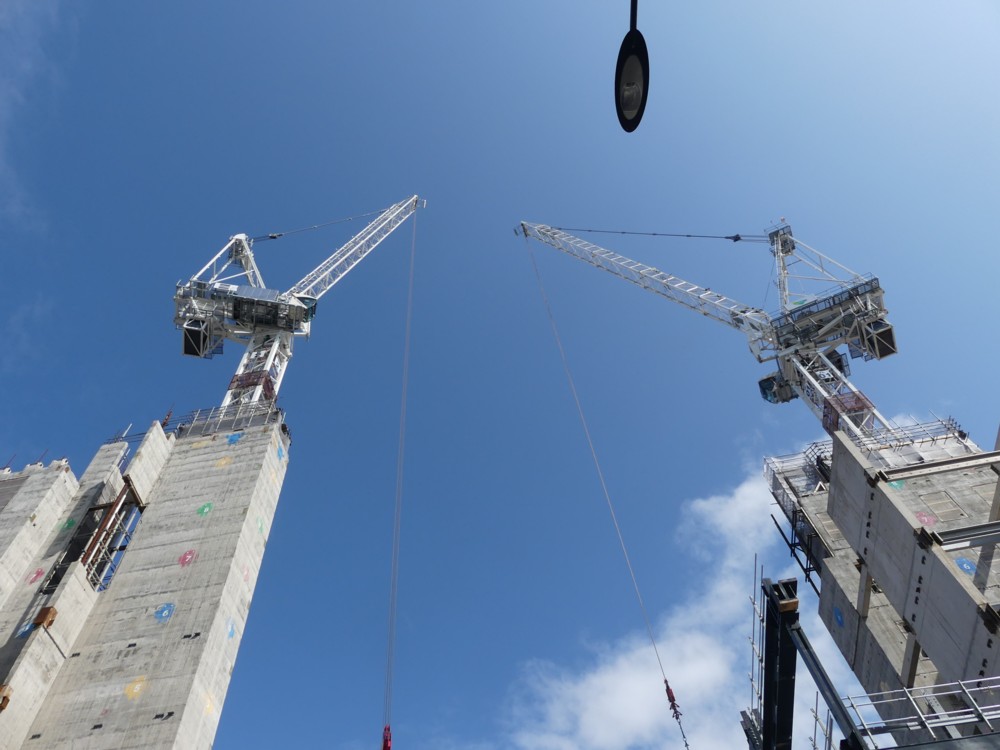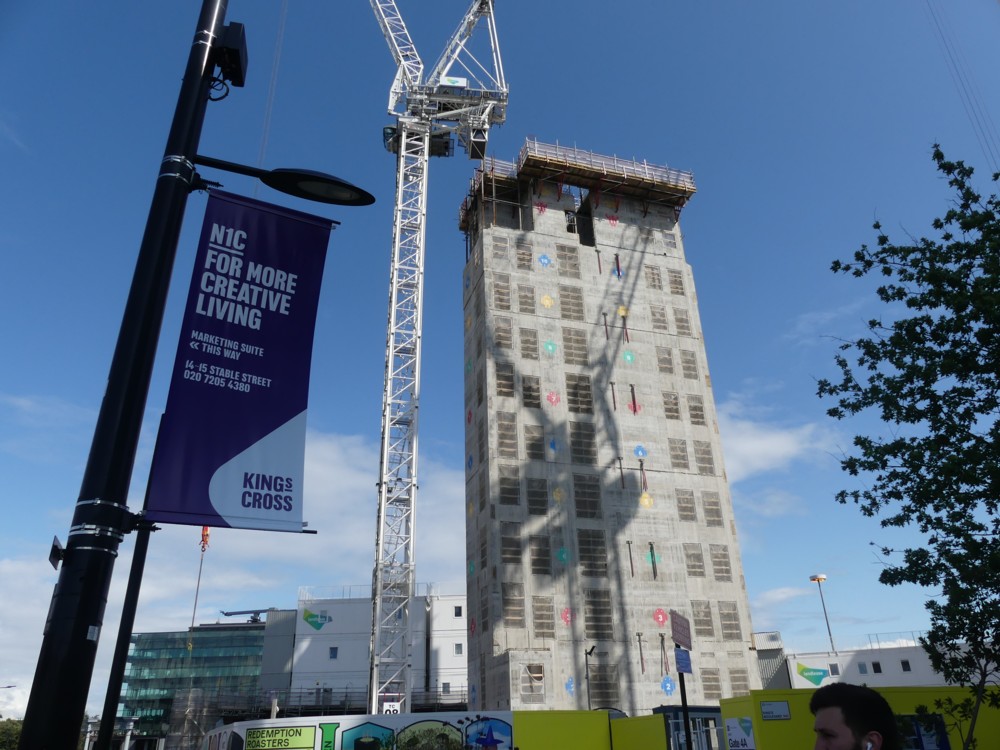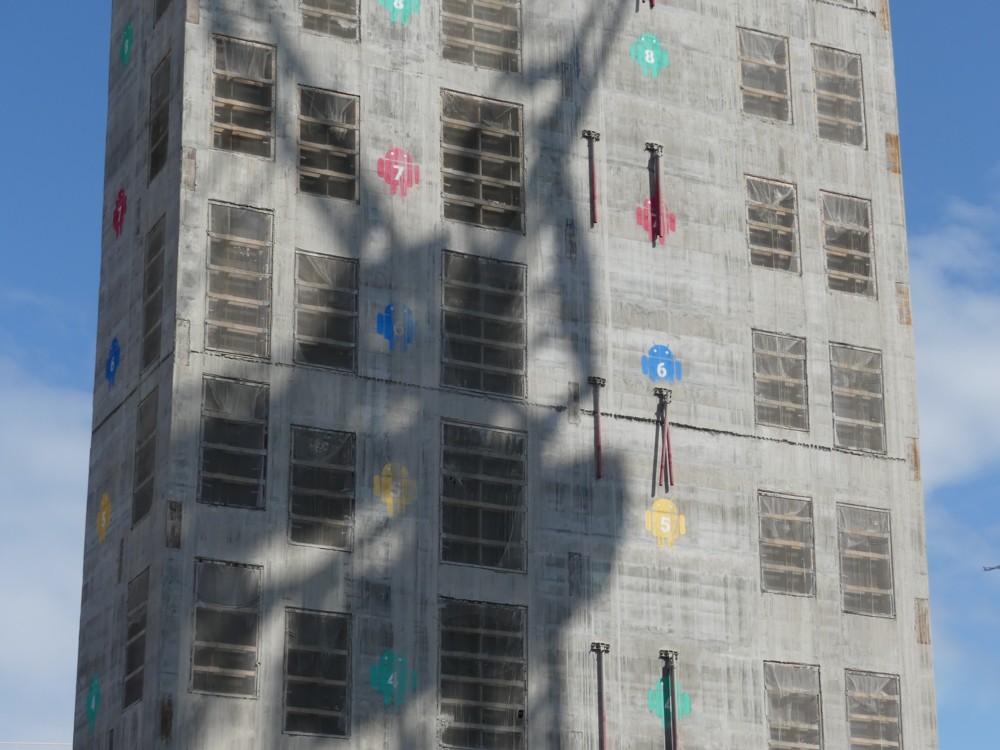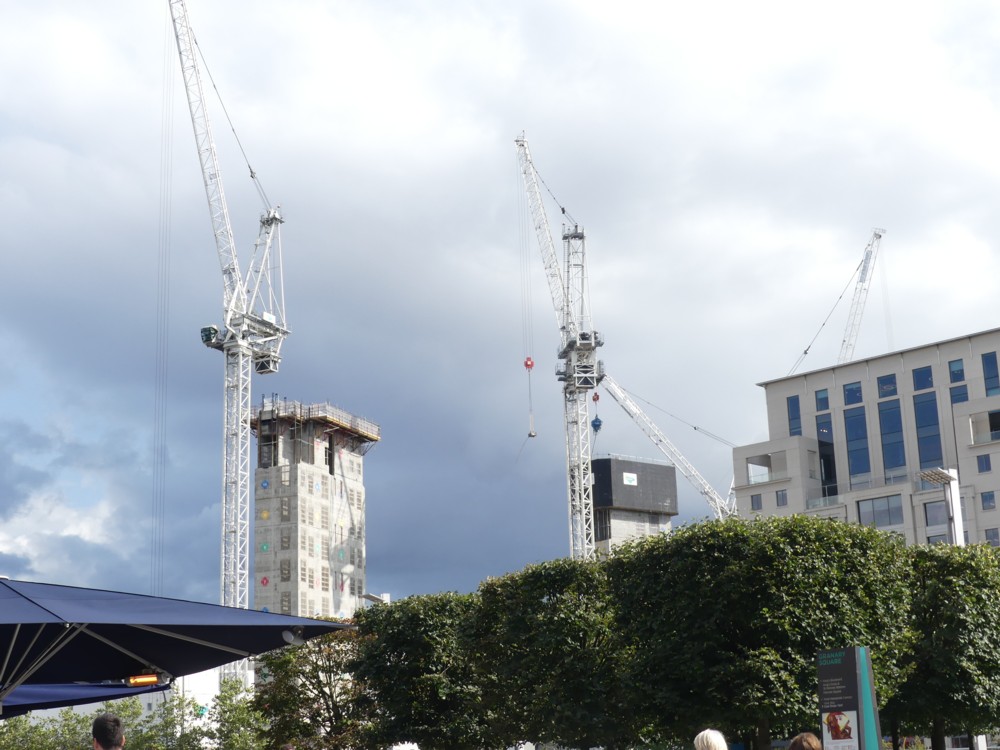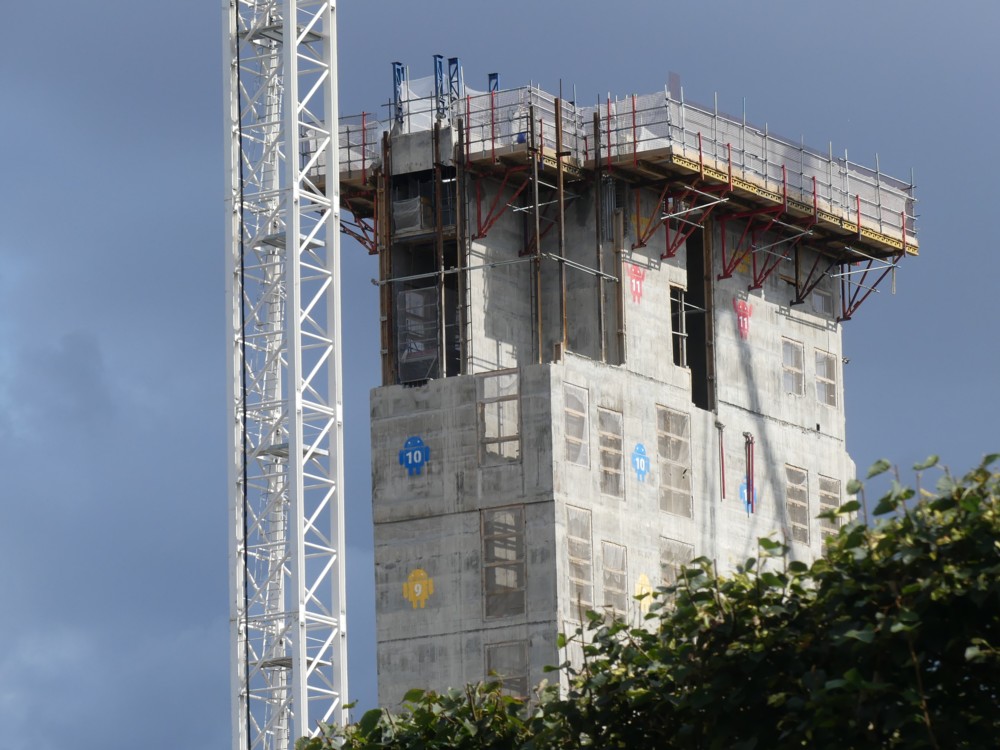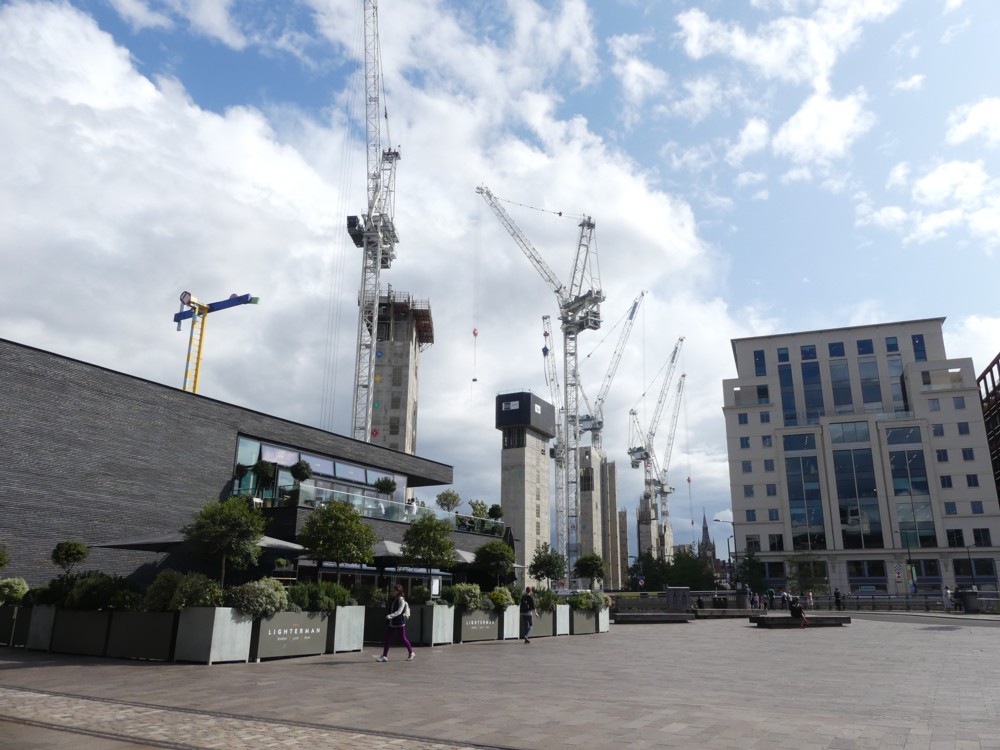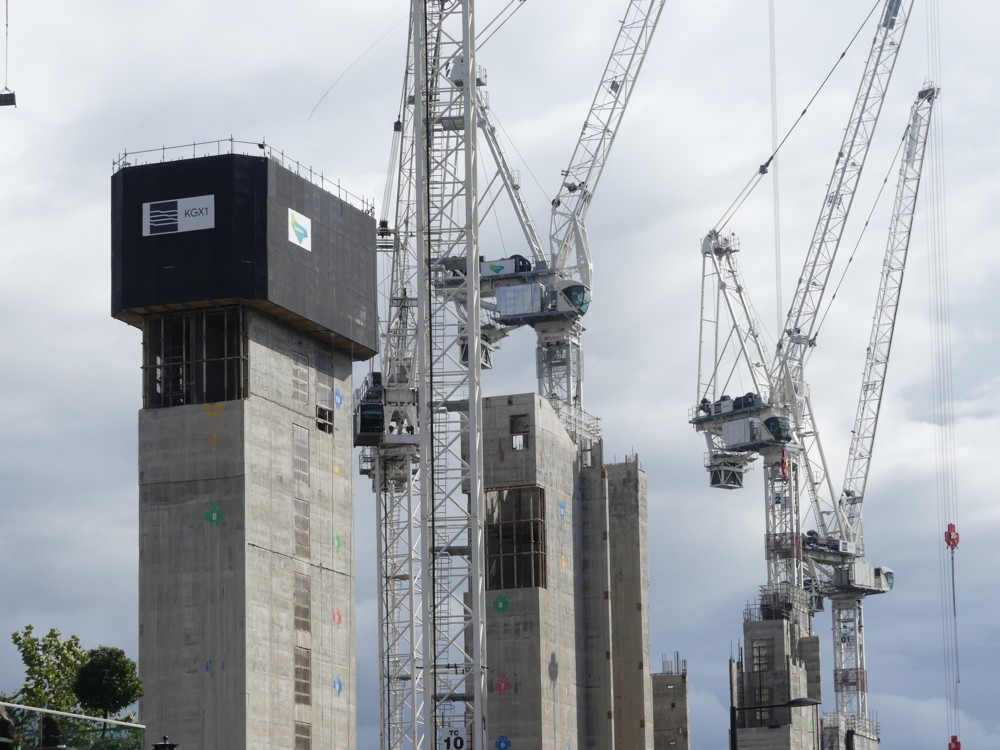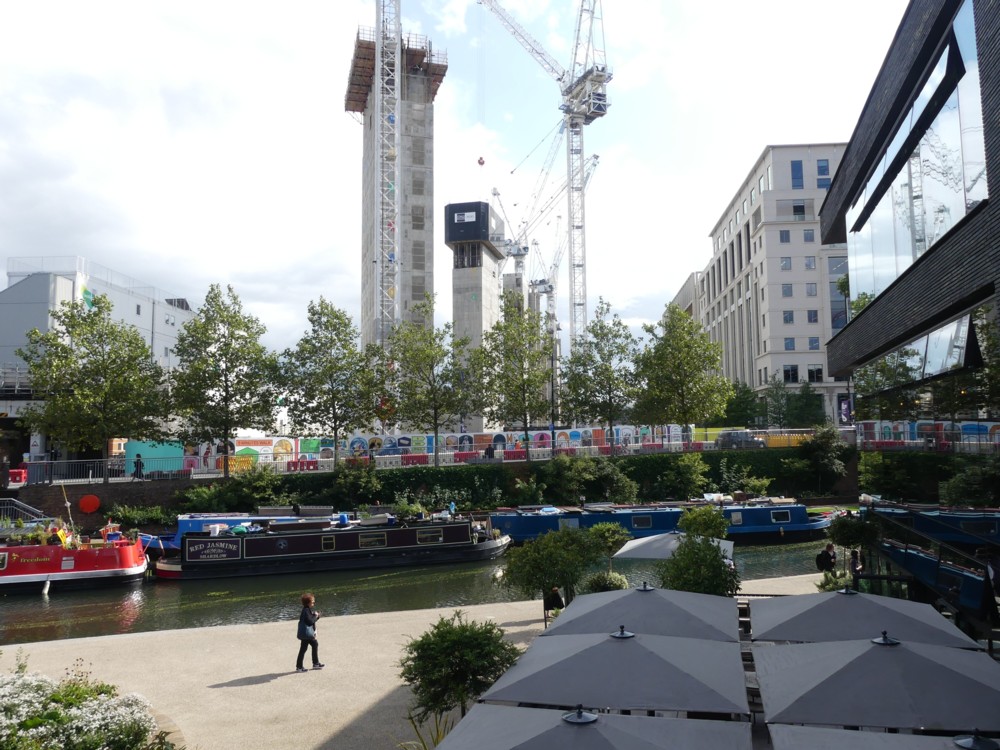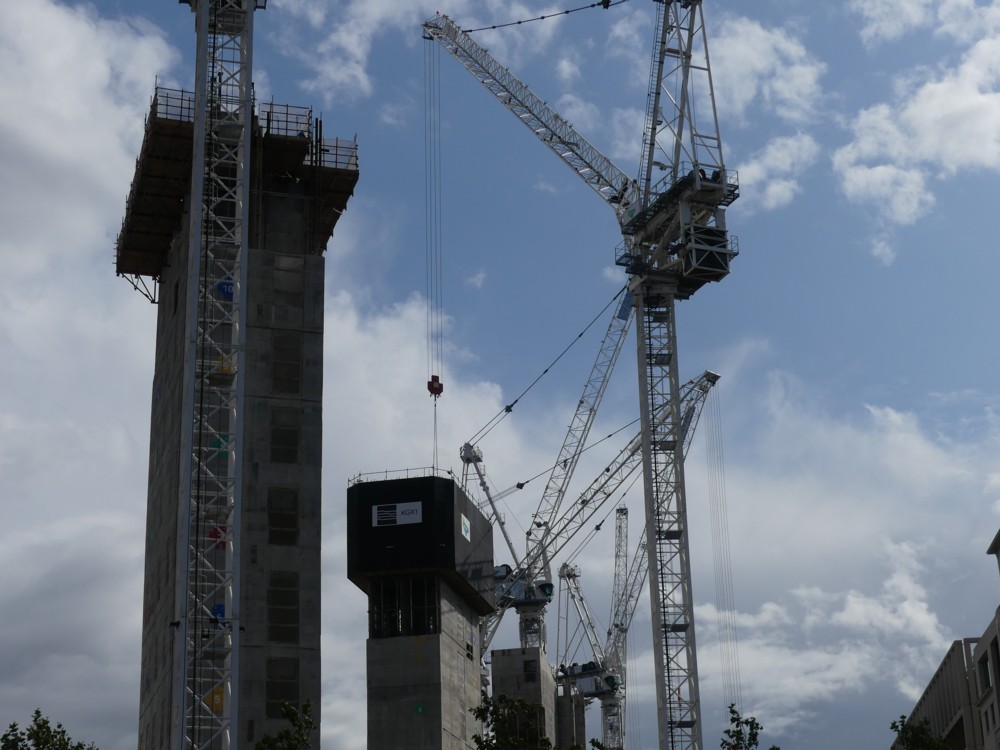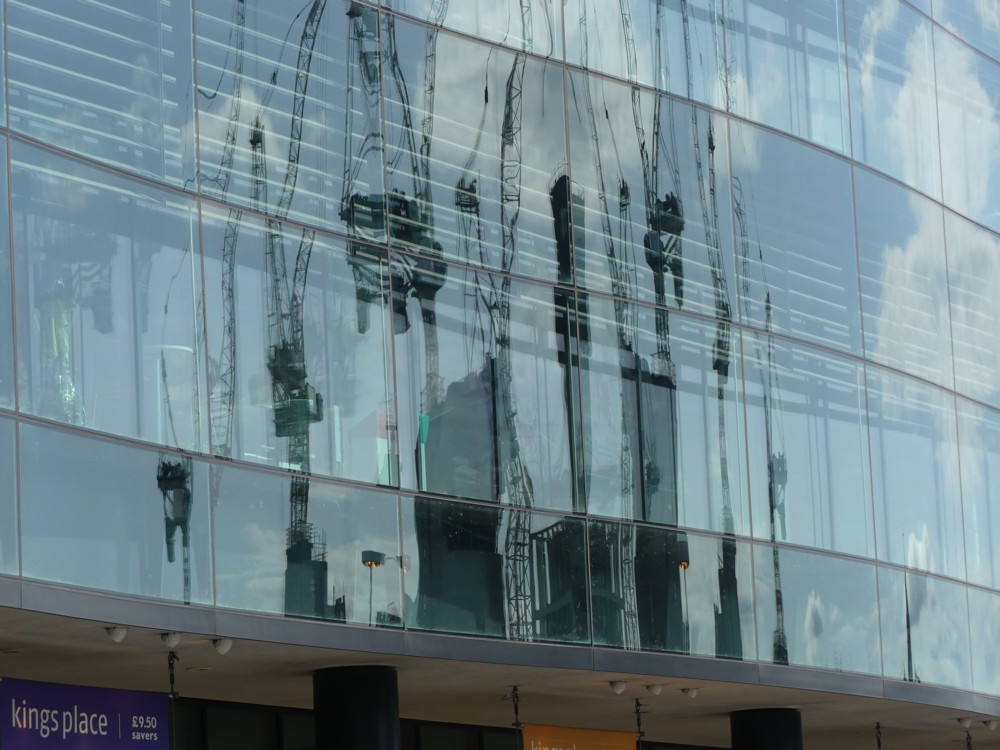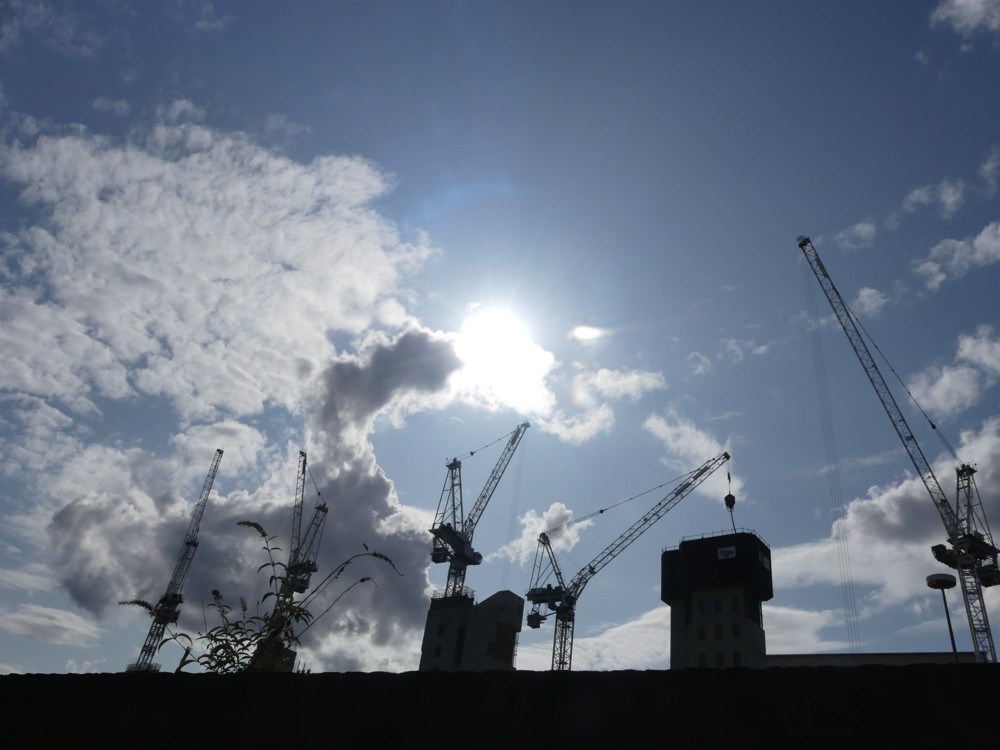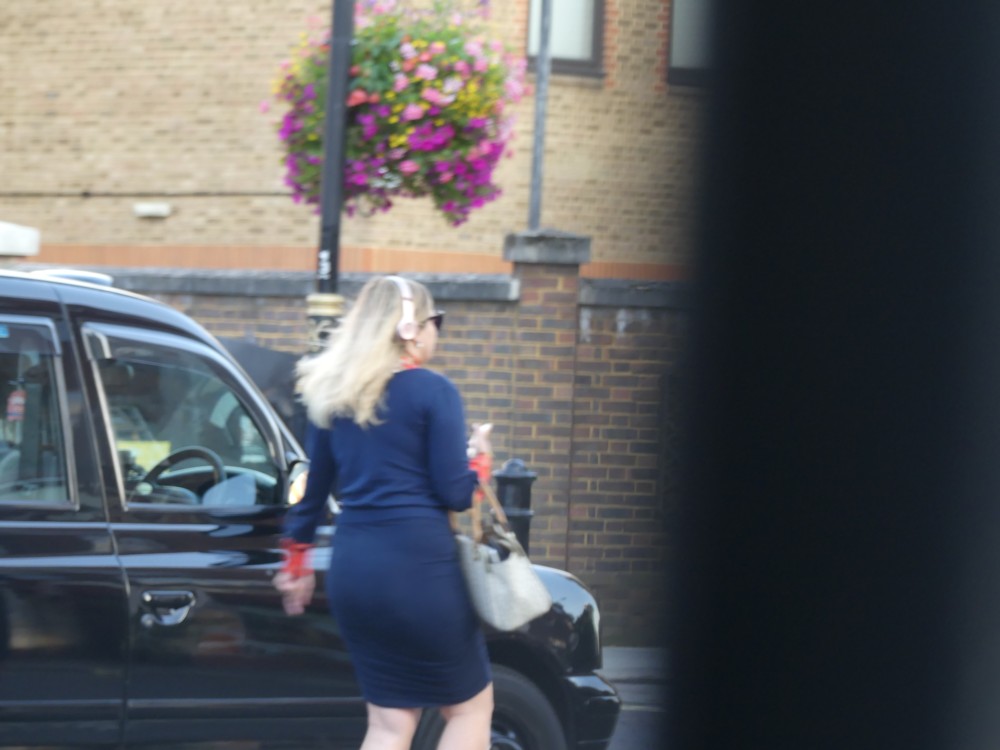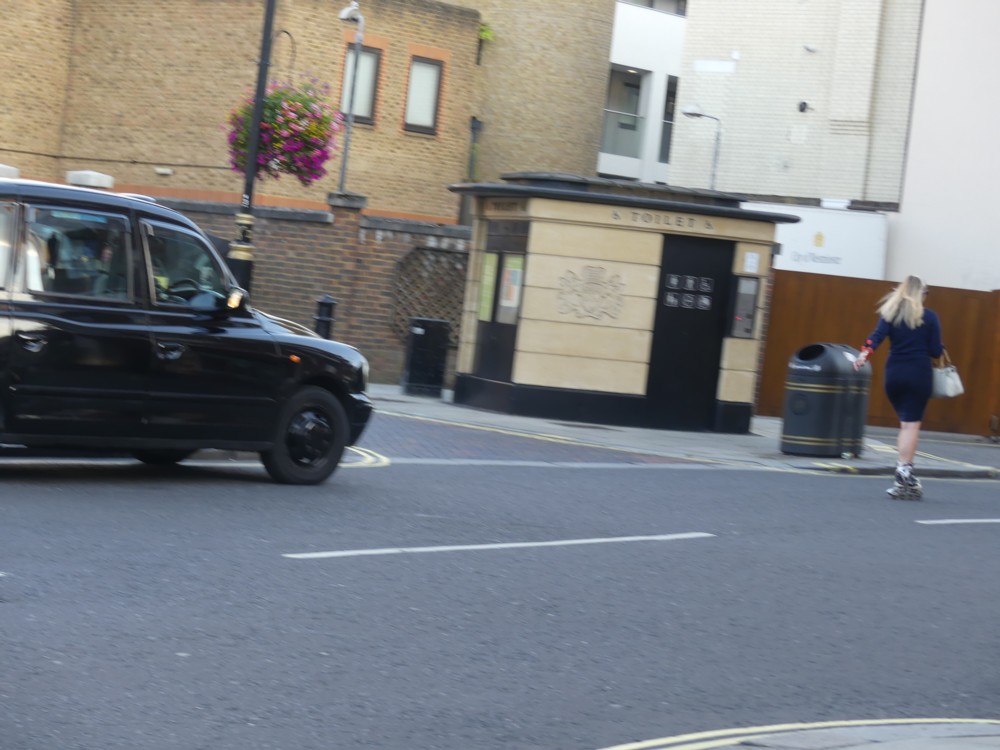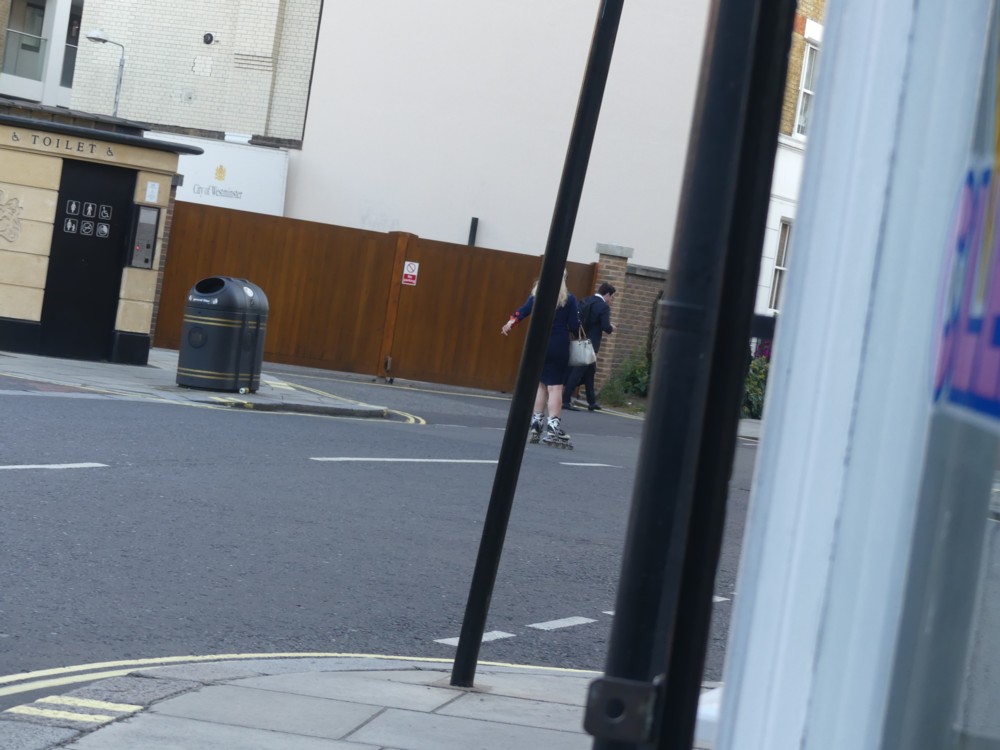Speaking as I was of tall columns with viewing platforms at the top of them (shame about the Tulip by the way (but I live in hope that this will be uncancelled (or that something similar will arise in that spot))), what about that big column just to the north of St James’s Park with the Duke of York on the top of it?
I recall greatly enjoying a photo-session I did in 2016 with this erection, lining it up with the BT Tower, through some splendidly leafless January trees:
All these photos were photoed from Horse Guards Road, which is at the eastern end of St James’s Park.
To get to the top of the BT Tower these days, you have to win a lottery. But what about getting close-up to the Duke of York? There seems to be a viewing gallery up there, so presumably there must be some way to reach it. Yet, I pass this Big Thing often, when walking through St James’s Park to the West End, and I never see a queue outside it. What’s the story?
This:
Inside the hollow column a spiral staircase of 168 steps, lit by narrow apertures in the wall, leads to the viewing platform around the base of the statue. Given the small, fragile platform and previous high demand for climbing, this staircase has been closed to the public for many decades.
Is there any way this platform could strengthened without it becoming a disruptively different shape? The problem is that, unlike with the Monument, the column above this viewing platform is the same width as below it, probably because it supports a big old Duke of York rather than just the little bobble that the Monument has at its summit. Almost any structural engineering can be done these days, but if the viewing platform remains as small as it is now, it presumably wouldn’t be worth doing.
I hope that Tulip makes a come-back.
The Duke of York is one of my favourite British military personalities, if only because most others only know him, if they know him, as an object of derision. The Grand Old Duke of York … etc. But the point is, after his failed career as a military commander, he had a much more impressive career as an military organiser back in London, improving the supply of, well, supplies, and also of officers who were better trained than hitherto. In other words, he arrived at his level of incompetence, and then demoted himself down to a position where he good really do some good, as the Duke of Wellington always acknowledged. Impressive, I think. Being the King’s brother, he could do this. But how many King’s brothers actually would do such a thing?
I know, I’m a libertarian and war is the health of the state, etc. But, the history of war is what it is, and this Duke deserves his monument. As is well explained in the very good chapter about him in this book.

